Written by Steven Schiller
Fact checked by Henry Speciale
A tire tread is composed of ribs or grooves throughout the circumference of the tire. This raised portion of the tread expels water making the vehicle safe to drive under difficult weather conditions such as rain and snow.
However, when the tire tread wears down, it loses traction on the road and forces the braking and steering system to work harder especially on wet conditions. It becomes unsafe to drive when the tire tread depth reaches 2/32 inches.
But, how to check tire tread depth? Tire tread depth can be measured using a penny, a quarter, a tire tread wear indicator, or a tire tread depth gauge.
Table of Contents
In the US, you can measure tread depth on a tire using a penny.
Insert the penny to the tire groove with Abraham Lincoln’s head going in first.
Some recommend replacing tires as early as this tire tread depth measurement because of diminished vehicle performance. The tires may not survive harsh driving conditions.
Another way to check the tread on your tires is using a quarter test.
In this test tread on tires, the tire’s tread depth is measured using George Washington’s head.
Conducting a penny test or checking tire tread with a gauge can reassure you that you measure tire tread correctly.
You can also check wear on tires without any tools because tires have a built-in tire tread indicator or wear gauge.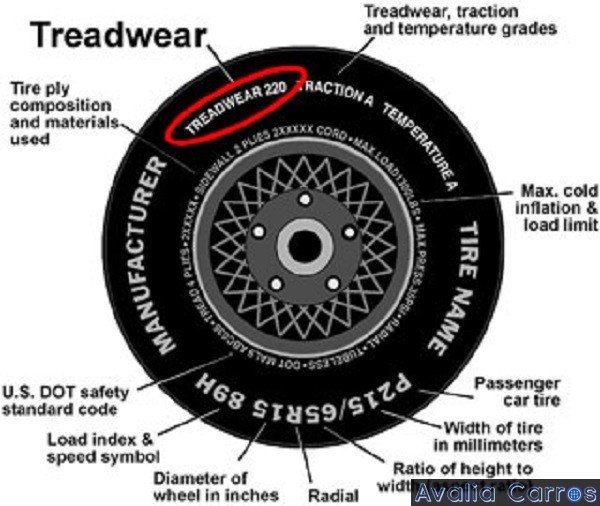
They can be seen as six bars throughout the tread ribs. The bar becomes visible as it reaches the minimum legal tread depth of 2/32 inches or 1.6 millimeters.
Some tires were designed with different grades of bar, such as 8/32, 6/32, 4/32, and 2/32. So check all the tread grooves to make sure it follows the tire wear indicator chart.
The tire tread depth of brand new tires of pickup trucks or large vehicles is around 15/32 to 20/32 inches.
If you would like to get a precise tire tread depth measurement, use tire tread depth gauge.
Of course, this tool cannot measure a bald or totally worn-out tread.
Look for the lowest tread depth. Insert the gauge pin into the groove, then press it towards the tread. This tool provides exact readings in inches and millimeters. They can be purchased in automotive shops for around $4.
What to prepare: Penny, Quarter, Tire Tread Indicator or Tread Depth Gauge
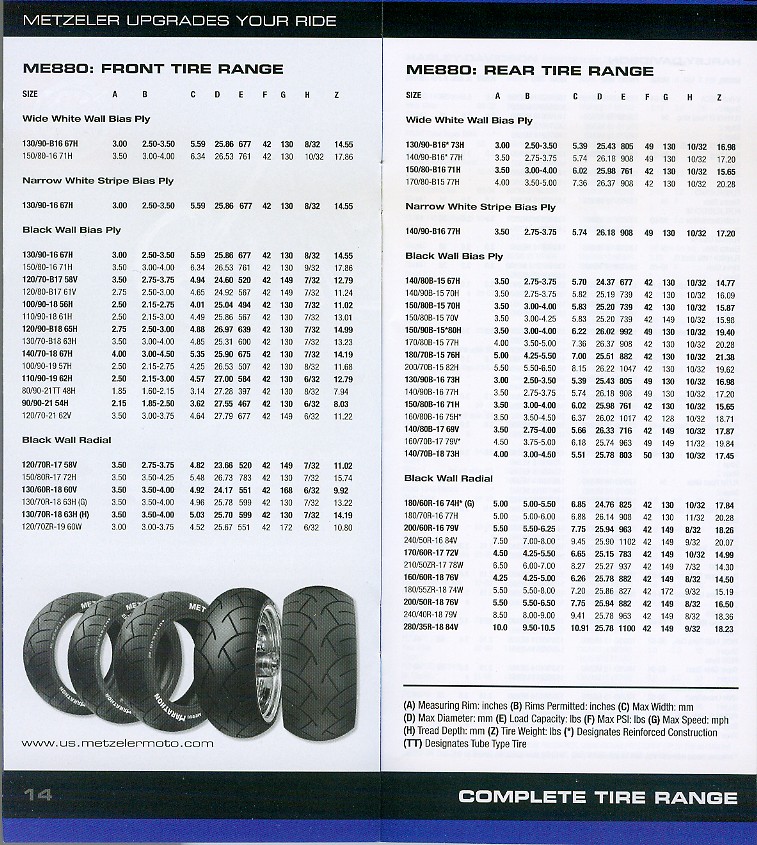
If a part of Lincoln’s head disappears in the groove, the tread is still above 2/32 inches.
 Use George Washington’s side.
Use George Washington’s side.If the tread covers Washington’s head, the tires are safe to use at 4/32 inches deep.
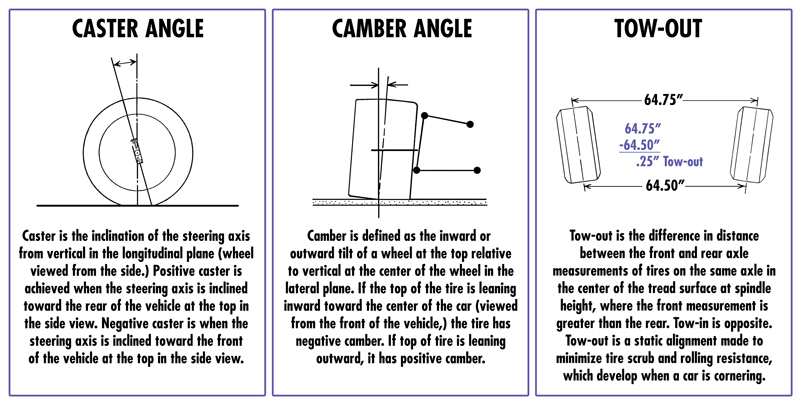
In general, tire tread depth should be checked every 3,000 miles or 5,000 km. It is also recommended to check the tread on tires seasonally or during changing of winter or summer tires.
Keeping a close check on your tire’s health is possible if you know how to check tire tread depth.
You can measure the tire tread depth with or without a gauge. The coin tests are helpful in providing an estimate of tire tread depth. However, if you would like to prevent vehicle accidents, the best way to check tread on tires is by using tire tread depth gauge.
However, if you would like to prevent vehicle accidents, the best way to check tread on tires is by using tire tread depth gauge.
The standard minimum tire tread depth is 2/32 inches but it is safer to plan tire replacement as soon as they approach 4/32 inches deep.
If you would like to know more about hydroplaning, feel free to share your thoughts.
Categories FAQsI'm Henry, the content writer for PPMC Transport. We build our site entirely on experience and extensive market and customer research. My goal is to create a trusted platform where people can go to determine what is best for their vehicles in terms of safety and convenience. Keep an eye out for our useful guide!
- Speciale Henry
By
Elizabeth Yuko
Comments (8)Alerts
We may earn a commission from links on this page.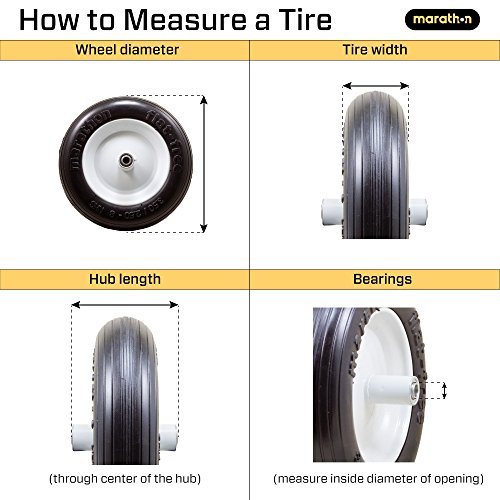
Photo: J.J. Gouin (Shutterstock)
As you were learning how to drive, you may have also learned a few car maintenance basics, like how to refill your windshield wiper fluid or check your oil levels. Another common tip was to use a penny to check the tread on your tires.
But like everything else, the cost of this simple test has also gone up over the years. Now, instead of using a penny, many automotive experts recommend using a quarter for this check. In an article for TheDrive, Tony Markovich explains how to do this, and why the quarter replaced the penny for this classic hack. Here’s what to know.
In short, the outside part of a tire—as in, what touches the ground—is known as the tire tread, and it, Markokvich says, “is usually cut in a pattern of grooves and ridges.” The tread is important because it’s how a vehicle grips the road as it is driving.
As the grooves and ridges wear down with use, they become less effective at allowing the vehicle to maintain traction during inclement weather—especially if precipitation is involved.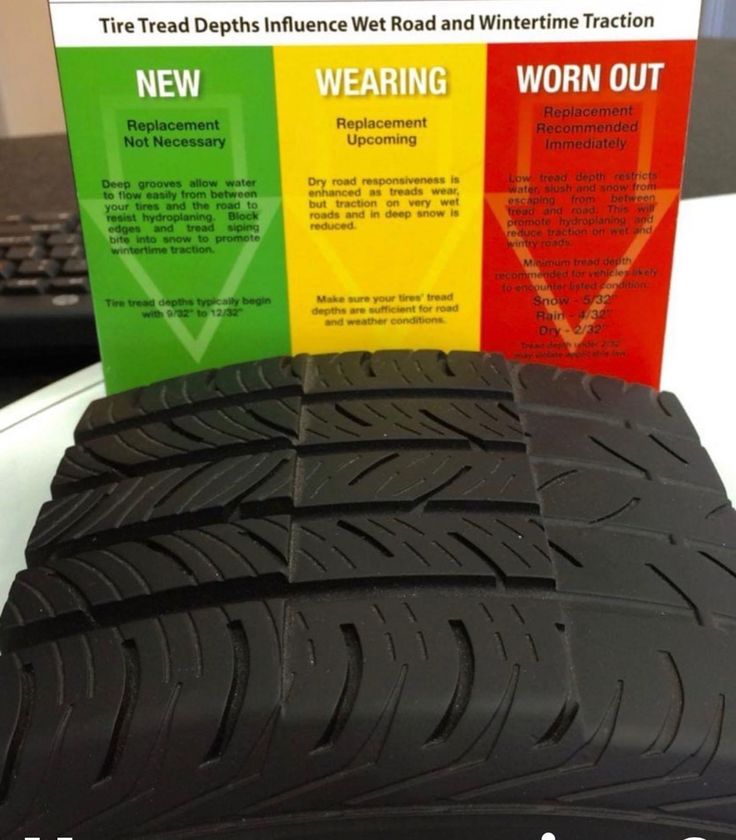 That’s because the treads help keep the car in control when roads are slick, and reduce the chance of hydroplaning.
That’s because the treads help keep the car in control when roads are slick, and reduce the chance of hydroplaning.
Given the importance of tire tread, drivers are encouraged to check it regularly—and traditionally, this has been done using a penny (Michelin still endorses this rule today).
Basically, you stick an upside-down penny in one of the ridges as the lowest point of the tire, and if you can see the top of Lincoln’s head, then it’s time to change the tire. “This rule operates under the impression that 2/32 of an inch is the limit of an operational tire,” Markovich writes.
Meanwhile, some experts have questioned this rule for decades, and now some companies, organizations, and publications—like AAA and TheDrive—now recommend using a quarter instead of a penny.
“This rule operates under the impression that 4/32 of an inch is the safe limit,” according to Markovich. “When it comes to tire safety, we prefer to stick to the side of caution, so we use the quarter test. ”
”
Finally, here’s Markovich with step-by-step instructions on how to check tire tread using a quarter:
- Find the most worn or lowest point on the tire.
- With a quarter upside down and with Washington’s head facing you, place the quarter in between the tire’s tread.
- If the top of his head is still buried, then you’re good, for now.
- If you can see the top of his head, then it’s time for new tires.
And while you’re down there, don’t forget to routinely check your tire pressure along with their tread.
Menu
Ways to check the depth of the tire tread
Penny Test
Tire Tread Depth Gauge
Conclusion
A tire's tread consists of ribs or grooves around the circumference of the tire.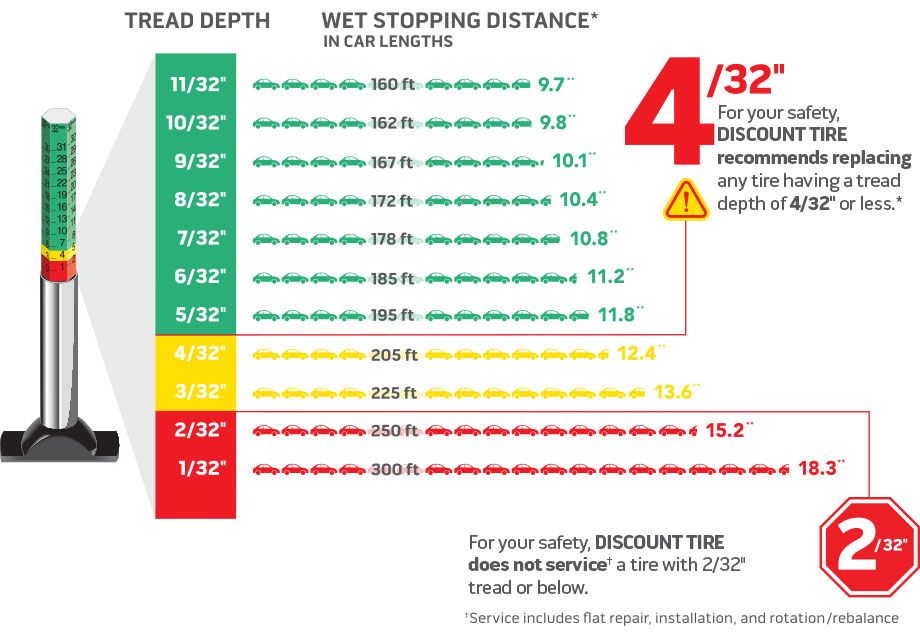 This raised part of the tread wicks away water, making the vehicle safe to drive in difficult weather conditions such as rain and snow.
This raised part of the tread wicks away water, making the vehicle safe to drive in difficult weather conditions such as rain and snow.
However, as the tire tread wears out, it loses traction and forces the braking and steering system to work harder, especially in wet conditions. Driving becomes unsafe when the tire's tread depth reaches 2/32 of an inch.
But how do you check the tread depth of a tire? Tire tread depth can be measured with a penny, a quarter, a tire tread wear indicator, or a tire tread depth gauge.
In the US, tire tread depth can be measured with a penny.
Insert a coin into the groove of the tire so that Abraham Lincoln's head goes in first.
If you can see the whole head of Lincoln, it means that the tire's tread depth is less than 2/32 of an inch.
If you get the same result when checking multiple grooves of a tire, a tire change is inevitable.
If a small portion of the Lincoln's head is hiding in the groove, it's safe to assume that your tire's remaining tread is 4/32 inches.
Some recommend changing tires after measuring the tread depth due to degraded vehicle performance. Tires may not withstand harsh driving conditions.
Another way to check the tread of your tires is to use the quarter test.
In this tire tread test, the tread depth of a tire is measured using the head of George Washington.
Tires are safer to ride if Washington's head is completely covered or not visible when placed between the tread grooves. This is typical for new tire sizes 10/32 to 11/32 inches or 8 to 9millimeters.
If Washington's head touches the rib of the tire when you insert it face down (seen by you), the tires are still safe with 4/32" of tread remaining.
If Washington's head is clearly visible in the quarter, the tire's tread depth is less than 2/32 of an inch. This requires immediate tire replacement.
Doing a trial test or checking the tire tread with a pressure gauge can convince you that you are measuring the tire tread correctly.
You can also check tire wear without any tools because tires have a built-in tread indicator or wear indicator.
These can be seen as six stripes along the entire tread rib. The strip becomes visible when it reaches the minimum allowable tread depth of 2/32 inch or 1.6 mm.
Some tires have been designed with different bar grades such as 8/32, 6/32, 4/32 and 2/32. So check all tread grooves to make sure they match the tire wear indicator chart.
New pickup or large vehicle tires have tread depths from 15/32 to 20/32 inches.
measure tire tread
If you want to get an accurate tire tread depth measurement, use a tire tread depth gauge.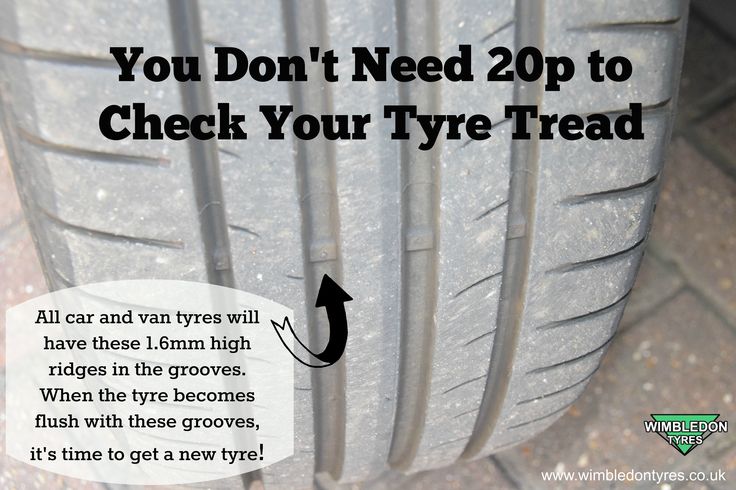
Of course, this tool cannot measure a bald or completely worn tread.
Look for the smallest tread depth. Insert the measuring pin into the groove, then press it against the tread. This tool provides accurate readings in inches and millimeters. You can buy them at auto stores for about $4.
What to cook: a penny, a quarter, a tread indicator or a tread depth gauge.
Penny is a quick coin test used to check if a tire's tread depth is at the 2/32 inch threshold.
A quarter is another test of a coin that can tell if a 4/32 inch tire is in good condition.
The tire tread indicator refers to the rubber notches that are raised 2/32 of an inch. When the lights are on, it means the tires are worn to an unsafe level.
The tread depth gauge provides the most accurate measurement of tire tread depth.
Detailed steps for each method
Take a penny. Use the side of Abraham Lincoln.
Turn the coin upside down so that the Lincoln's head is facing the tread groove.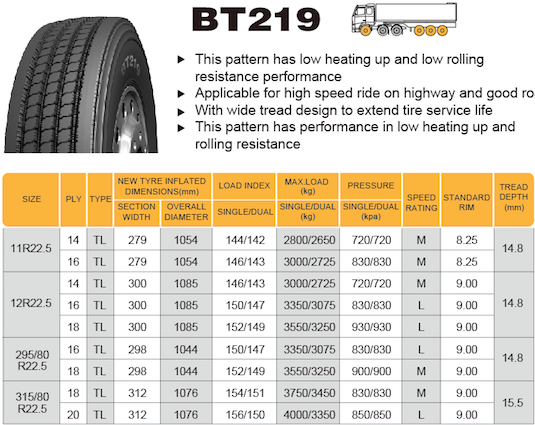
Insert a penny between the tire tread.
Check if Lincoln's head is visible. If so, the tires are not safe to use because the tread depth is less than the minimum tread depth.
If part of the Lincoln's head disappears into the groove, the tread is still over 2/32 inch.
Run this test on the entire tyre. Check various places, especially areas that look worn.
Quarterly Test
Get a quarter. Use the George Washington side.
Insert a quarter with Washington's head towards the ribs.
If you see Washington's head, the tires need to be replaced.
If the tread covers Washington's head, the tires are safe to use at 4/32" deep.
Carry out this test on several sections of the tire. Pay attention to areas that are clearly worn.
Tire tread wear indicator
Look for the initials TWI (tread wear indicator) on the shoulder of the tread.
Right through this point, you will find tread wear indicators or stripes on the bottom of the tread.
If the tread is level or set at the same level as the wear bars, they are considered unsafe or worn.
Some tires have numbers in the center of the tread rib that indicate the tread depth in millimeters. As the tire wears, these numbers disappear. The visible number when you check the tire indicates the remaining tread.
Check the scale you are going to use (inches or millimeters).
Place a tire tread depth gauge over the tire groove.
Click on the pressure gauge.
Rotate the dial until you find a number with a bar underneath it.
The first number displayed is the tire tread depth.
When is the best time to check tire tread depth?
As a general rule, tire tread depth should be checked every 3,000 miles or 5,000 km. It is also recommended to check the tire tread seasonally or when changing winter or summer tires.
You can closely monitor the condition of your tires if you know how to check the tire tread depth.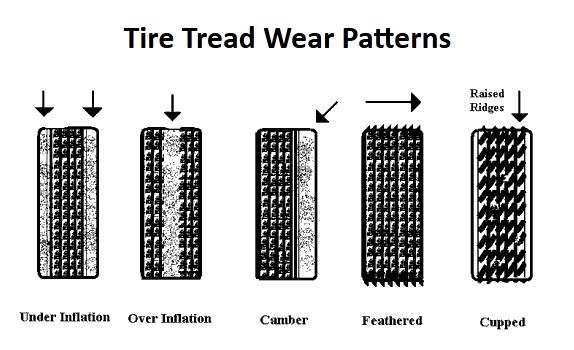
Tire tread depth can be measured with or without a feeler gauge. Coin tests help evaluate tire tread depth. However, if you want to prevent traffic accidents, the best way to check tire tread is to use a tread depth gauge.
The standard minimum tire tread depth is 2/32", but it is safer to plan to change tires as soon as they approach 4/32".
The tire tread is the outer part of the wheel that provides traction in all weather conditions. The protectors inevitably wear out during the operation of the car, the working height of the slope decreases. The residual tread depth should be periodically monitored and the set of tires should be renewed in time - this will reduce the risk of losing control of the car and save the car owner from fines from the traffic police.
Tread wear rate depends on many factors:
Measuring the thickness of the tread layer will allow you to accurately determine the degree of tire wear and make a decision in time to replace them with new ones.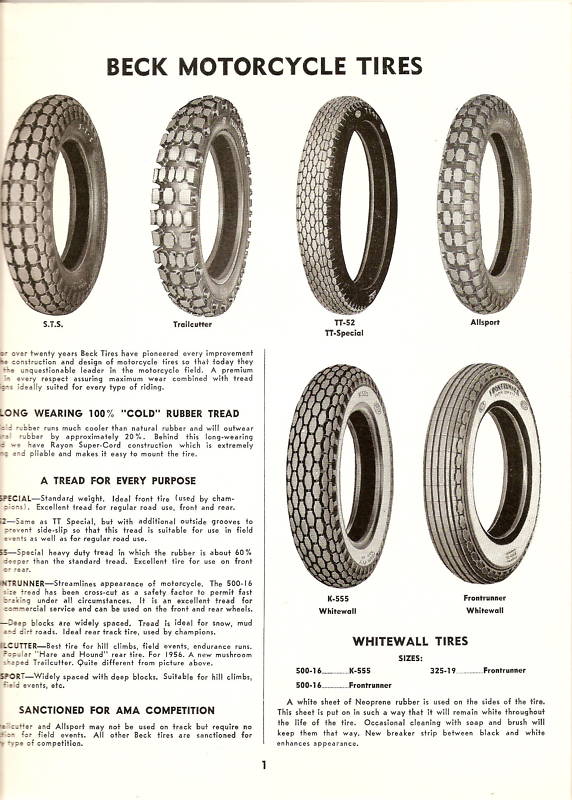
Different tires have different wear limits. Tread depth affects vehicle handling and road safety.
| According to Chapter 5 of the SDA, limiting norms for the height of the tread pattern have been established. For category M1 - passenger cars - as well as vehicles of categories N1, O1 and O2, the minimum allowable value is 1.6 mm. When using winter tires on snowy or icy surfaces - the limit is 4 mm. |
Let us explain what categories of vehicles we are talking about:
N1 - vehicles intended for the carriage of goods, having a technically permissible maximum mass of not more than 3.5 tons;
O1 - trailers, the technically permissible maximum mass of which is not more than 0.75 tons;
O2 - trailers, the technically permissible maximum weight of which is over 0.75 tons, but not more than 3.5 tons.
The traffic police officer has the right to measure the residual depth with a verified device. In case of a recorded violation, a fine is imposed on the car owner.
The new summer tire has an average tread depth of 7-8 mm. The service life of summer tires is usually 3-5 seasons with average mileage and moderate driving style.
| Residual height limitation by law is 1.6 mm. However, with a remaining outer layer of 3 mm, the machine is already difficult to control, grip deteriorates, and a safety hazard arises. |
Do not wait until the critical value is reached. Make sure you change tires in advance.
Winter tires are used in severe weather conditions: low temperatures, icy conditions, on snowy road surfaces. Worn elements make the tire ineffective on slippery winter roads. Accordingly, a more serious approach to the condition of the tire tread is needed.
Non-studded friction tire (Velcro) with a tread depth of 8-9mm. A new studded model - from 9 to 11 mm, some firms produce a tread with a height of 12-18 mm.
| If the tread wear is up to 4-5 mm, the winter set of tires needs to be replaced. In addition, the loss of more than 50% of the metal spikes is also a reason to change the car's shoes. |
The average life of winter tires is 2-4 years.
Universal all-weather is used in a temperate climate both in winter and in summer, it is optimal at temperatures from +10 to -10˚C. This type of tire is not suitable for use in snowfall or severe frosts. SDA allows the use of all-season tires in the winter if there is a special marking:
| All-season tires last 3-4 years on average. In summer, at high temperatures, all-weather tires wear out much faster. |
You can estimate the remaining tread layer in various ways:
On some tire models there are special volumetric indicators in the form of jumpers. Check: if the tread layer is worn down to the level of the jumpers, the tire is not suitable for further use.
On the surface of certain types of tires, manufacturers knock out numbers of various depths. Depreciation is assessed visually - by the visibility of individual numbers.
With the help of measuring instruments: from a metal ruler, caliper, depth gauge to an electronic tread depth gauge.
Many motorists measure the remaining tread depth with a coin. Warning: this method of measurement is not accurate. It will not show you actual tire wear figures.
Tire tread height should be measured at least at 6 different points, preferably at 9 or even 12: in the center and from both edges of the tread, at different points around the circumference of the tire.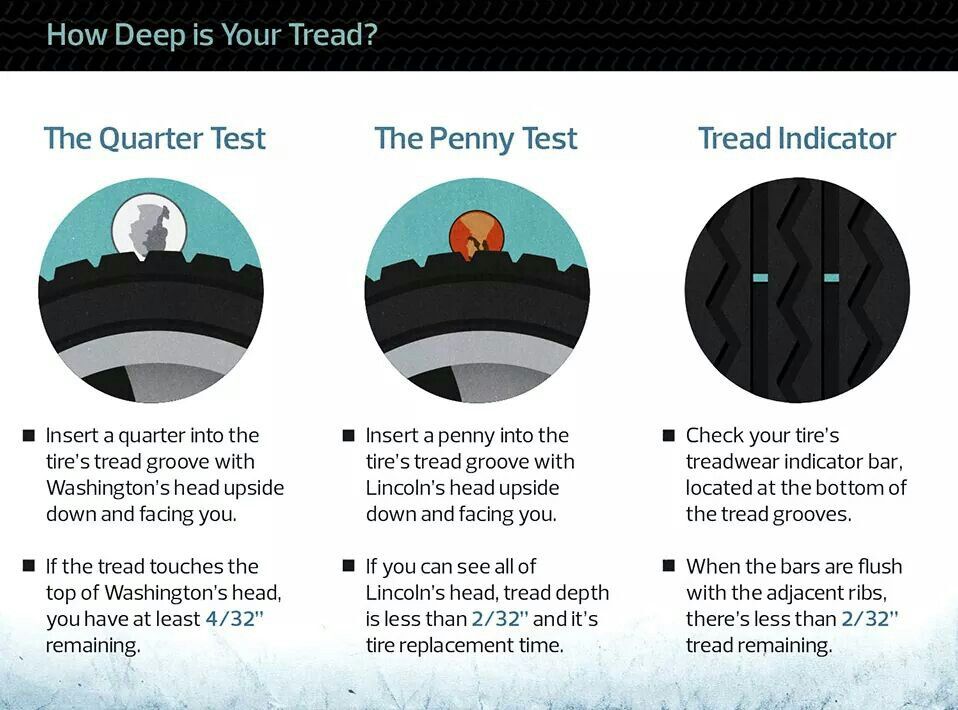 The measurement results at all specified points must match. If they do not match, then the tire wears unevenly. The driver should find out why this is happening. Some causes of uneven tire wear are low or high pressure in them relative to the regular one, suspension failure, extreme driving style.
The measurement results at all specified points must match. If they do not match, then the tire wears unevenly. The driver should find out why this is happening. Some causes of uneven tire wear are low or high pressure in them relative to the regular one, suspension failure, extreme driving style.
Old tires have become unusable, the amount of tread remaining is approaching a critical line - no need to take risks, it's time to change your car's shoes. There is a great temptation to get by with small financial costs and purchase a set of used tires. Be careful!
Sellers advertise used tires as good or excellent condition. Do not be too lazy to personally measure the height of the tread layer. And remember: for winter tires, a residual tread depth of 4 mm is already 100% wear.
When buying used tires with it is important to remember that tires of different manufacturers and seasons initially have different tread heights (when they are new). And most importantly: the tires have, accordingly, different wear limits - the tread depth at which the tire begins to lose important characteristics. These differences are most noticeable in winter and summer tires. Keep these points in mind when measuring the remaining tread depth of used tires.
These differences are most noticeable in winter and summer tires. Keep these points in mind when measuring the remaining tread depth of used tires.
The quality of domestic roads, unfortunately, does not allow tires to be used for 7–10 years. If you still decide to buy a used kit, check the year of manufacture - it is better not to consider tires older than 8 years.
there is no guarantee for tires bought from hands;
the seller can cheat - for example, offer tires from different manufacturers in one set. Some especially enterprising salesmen even cut the tread on the worn rubber, as if the tires had not yet worn out;
you will have to spend a lot of time picking up tires from private sellers - much of what is put up for sale is only suitable for recycling;
Products may have hidden or visible defects. Visible are punctures, tears, cuts. A tire with a lot of damage can collapse in motion.